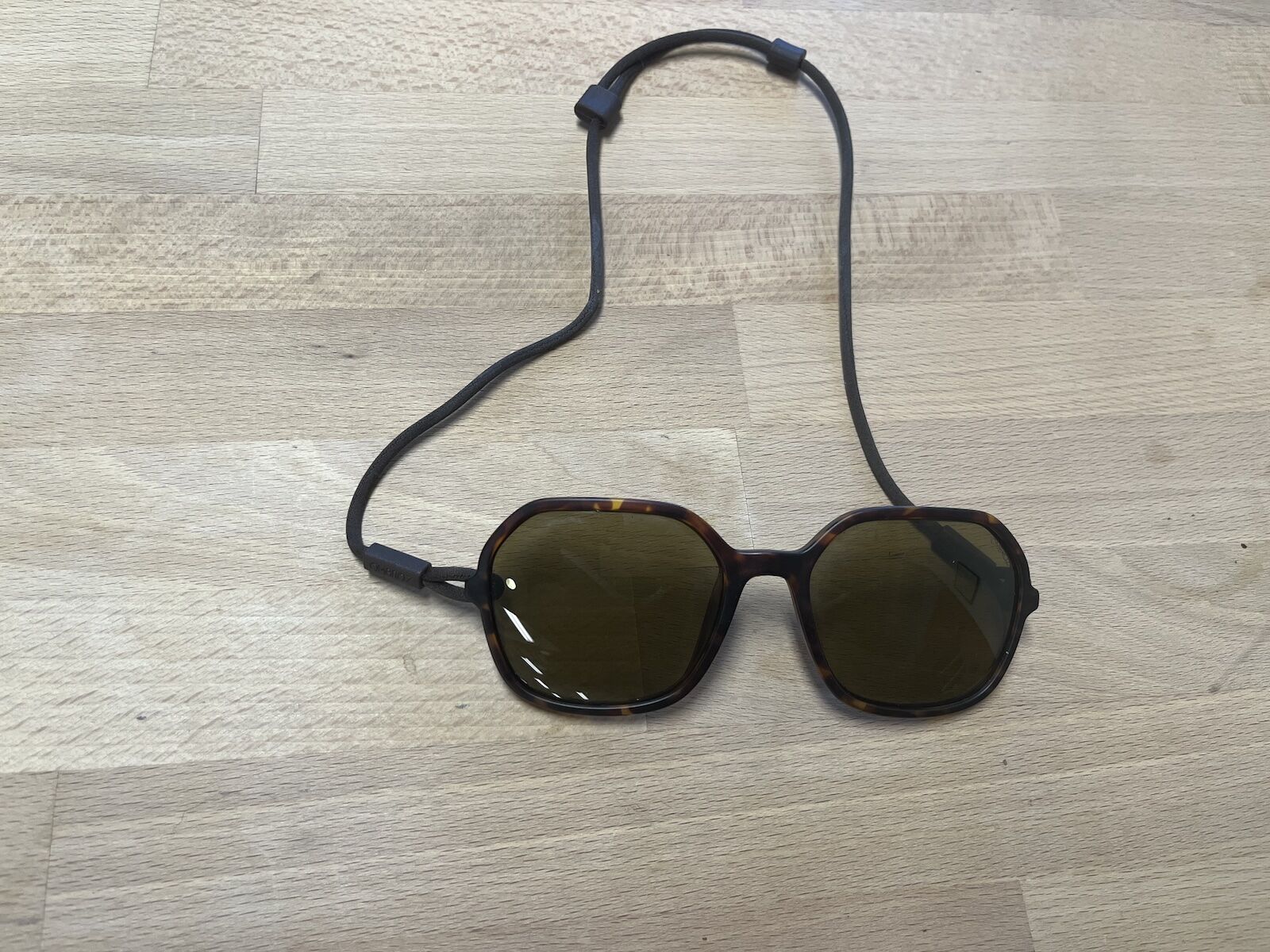Maybe it’s the ADHD, or maybe I’m just cursed. I’ve never been good at hanging onto a pair of sunglasses. As a journalist who regularly reviews outdoor gear, I always jump on the sunglasses beat because I know that by the time a new pair arrives I’ll have lost the one currently on my head. In that sense, Ombraz sunglasses were made just for me. Ombraz founder Jensen Brehm came up with the idea for armless sunglasses after losing his shades on a camel safari in Africa. If it were me, I’d have lost my sunglasses on the plane on the way to the safari. Sunglasses that you literally can’t lose once you put them on should be a perfect fit, right?


These Indestructible Sunglasses Are the Best for Outdoor Activities
Still, after obtaining a pair of Ombraz Classics a few years ago, I was at first reluctant to wear them in public. Holding them in my hand, they looked weird to me, like something was missing. I couldn’t just slide them over my ears, but had to fully put the strap over my head and tighten it. Looking at myself in the mirror while wearing the Classics, I couldn’t get over how circular they looked compared to the more rectangular shades I normally bought. And where are the arms? Aren’t they an important part of looking and feeling cool in a pair of shades?
Shortly thereafter I’d take them with me to a conference only to have a female acquaintance say over a round of patio drinks, “I see you brought your ‘no-sexy-time’ sunglasses.”
As evidenced by the ego hit above, I got over my inhibitions and started wearing the Ombraz Classics around. My initial off-puttings were promptly disproved, as I’ll get into below. That’s because, when it comes to gear that comes with me on a trip, a day on the river, or most importantly, a week-long expedition into the Tien Shan Mountains along the Kyrgyzstan-China border, I care more about function than fashion. I’ve never owned a pair of sunglasses more durable and high-performance than Ombraz. They’re more than worth the $160 price tag.
We hope you love Ombraz sunglasses! Just so you know, Matador may collect a small commission from the links on this page.
Putting Ombraz sunglasses to the test

River style. Photo: Tim Wenger
I first wore my Ombraz Classics on a hike near home in western Colorado. I started with the strap a bit loose in the back, where it sat comfortably but jiggled once I started ascending. Within the first mile tightened the strap. This made the shades feel far closer to tradition armed sunglasses, and also kept them firmly on my nose and eyes. Since that first hike I’ve appreciated how easy it is to adjust Ombraz shades on the fly, based on how tight you need them in the moment.
Ombraz really shine during higher-impact activities. The brand claims they are indestructible – that you can literally run them over with a car and the frames won’t snap. I haven’t done that, but I have put them through a ringer of outdoor activities and long-haul travel. I brought them along on a four-day river trip down the lower Salmon River in Idaho, and was impressed not only with how they stayed firmly on my head no matter how choppy the water got but also by how clearly I could see even when the sun was reflecting off the water right at me. The polarized lenses and 100% UVA/UVB Protection kept my eyesight fresh even after being on the water all day, whereas with certain other shades I’ve worn on the river – like non-polarized or pairs that don’t hug as close to my face – I can feel the sun burning my eyes after a couple hours. The brand recently dropped a Floatie that attaches to the strap and prevents the shades from drowning in the rare case they end up in the water.

High alpine style. Photo courtesy of Tim Wenger
The biggest test I put the Ombraz Classics through, though, was the weeklong splitboard expedition in Kyrgyzstan I mentioned above. This trip had me out on the skin track all day for seven straight days – high above treeline where all that was around us was white snow reflecting the sun from below as it beat down on us from above. Ski touring is an interesting test for sunglasses because, like on the water, the sun hits from all angles and you need protection from above, below, and the sides. Also, you’re wearing a lot of other gear and are regularly adding and dropping layers or swapping between a hat and a helmet. Also, though goggles are more associated with skiing and snowboarding than sunglasses, when touring you spend more than 90 percent of the time ascending, so the sunglasses are actually far more important than the goggles – I even used the Ombraz shades for the descent a couple of times when my goggles were fogged. I have no issues to report from the experience.
Ombraz represents my environmental ethics

Display style. Photo: Tim Wenger
Part of Brehm and cofounder Nikolai Paloni’s mission with Ombraz is to produce a product that makes the world a better place. As documented in its Net Benefit Impact report, the company plants 20 mangrove trees for every pair of sunglasses it sells. It calculated that each pair of shades, made from polyamide, recycled nylon, nylon, and thermoplastic polyuethane, emits 3.6 kg of CO2 equivalent, including delivering them to customers. Over the course of 20 years, according to the report, each cluster of 20 mangrove trees sequestors 6,168 kg of carbon. Give or take a bit on both metrics, the brand still has a net-positive impact.
Ombraz claims its sunglasses are the most carbon-negative product on the planet, with verification from third-party auditor Greenticket, and the brand is working to make future generations of its sunglasses biodegradable in order to have a fully circular product. In the meantime, the company is moving all of its production and shipping operations to Italy in order to eliminate shipping between production and warehousing. Many in the outdoor space are familiar with Patagonia’s business ethos, and it’s equally – if not far more – impressive for a much smaller product brand like Ombraz, which has far fewer financial resources to work with, to have such a clear picture of its environmental impact and how to minimize it.
On top of the offsetting and emissions reduction work, however, having a pair of sunglasses that actually lasts a long time is more sustainable in itself. Although I mostly use Ombraz for outdoor activities, I’ve cycled through far fewer pairs of sunglasses since I started wearing these, because most of the glasses I’d lose or break happened either while traveling or outdoors.
Three years later, I left the Ombraz Classics in a hotel room in Los Angeles. The irony being that hopefully someone took them and will use them, continuing their non-breakable saga for a few more years. Putting on a “regular” pair of sunglasses again, I finally admitted it to myself. Ombraz shades aren’t meant to make me look like Keanu or Biden or Bono, either of whom can walk into a dark room with sunglasses on and emanate nothing but coolness. Rather, they’re workhorses, meant for the road and trail, protecting my eyes from the sun and the debris that inevitably flies into my face when I’m working hard outdoors. The Ombraz Classics is the best and most reliable pair of sunglasses I’ve ever owned, bar none. I’ve since acquired two more pairs – including one of the new Cammina style – and they’ll be guarding my eyes from the glare of the snowbound sun the next time I venture into the high alpine, and the next time I put into a raging river and need a clear line of sight downstream.